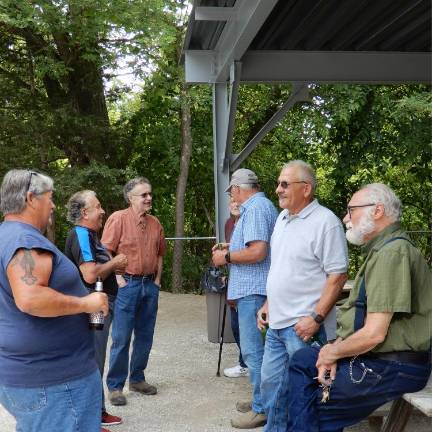
The history of Sussex County has been built through the lives and labors of many individuals along with their relatives - spouse, children and perhaps grandparents.
This relationship brings to the fore the idea of families, clans, groups and communities. This is the human framework upon which progress is achieved.
Community includes “communities of interest” or “a community of practice.” With the “practice,” this reflects where people work and the jobs they hold.
The Lenni Lenape first peoples are one group. Another group is the farms and farmers.
This week, I am recognizing the contribution of miners in Sussex County.
Mining, and the need for miners, has been a fundamental reason for habitation in Sussex County from the first visits of Europeans. For example, Dutch explorers are said to have investigated the ore body in the area of today’s Ogdensburg during the 1600s.
One of the most venerable roads in America - Old Mine Road - was built to provide access to the Pahaquarry copper mines and ran through Sussex County along the Delaware River.
Iron prospecting found many veins that run throughout Sussex County in a generally northeast-to-southwest direction. Mines proliferated throughout the Highlands, from small prospects taken to diminutive bloomeries along the Pequannock River, to large operations, such as one of the largest blast furnaces in the nation along the Wallkill River in the mid-1800s. Andover Forge and others helped with the Revolutionary War in providing iron for cannon and musket balls.
Important people helped harness the native rock resource by mining and smelting the iron - men, such as Quaker John Sharpe, Stephen Ford and his family, and the great Thomas Edison and his iron-concentrating works.
The American Revolutionary War leader, Gen. William Alexander, also known as Lord Stirling, owned the mine now known as Sterling Hill Mine, from which ore contained zinc mixed in with other elements.
This very large ore body containing zinc was also found in Franklin. A main constituent of the zinc ore was in the form of franklinite. Franklinite may, in the next couple weeks, become the state mineral of New Jersey if the governor signs the unanimously supported bill approved by the Legislature.
Underlying all extraction of the natural resources, mining operations large and small, and the very significant contribution to our world’s basic tools and technology are the miners who made it happen.
The miners came from hardy local men and a very large contingent of immigrants during the past 200 years or so. Irish, English, Hungarian, Italian and Eastern European people came here looking for a better life. Most found the new life along with the hard work and risky conditions of mining.
These miners helped build our county, establishing a good life for their families and raw material for the employers. Today, though, underground mining has left our county. Exhaustion of ore bodies or changing prices of commodities have closed the mines.
The Franklin Mineral Museum honors those who risked their lives underground. Each year, the diminishing numbers of local miners come for Miners Day and enjoy being the center of attention.
These rugged men, symbolic of how our county was built, reminisced with their fellow workers at Miners Day last weekend, spending an afternoon recalling their respected work in dangerous conditions.
They are men who embody the values of hard work, strength and resolve under hazardous conditions and made a tangible difference in the life of our communities of Sussex County.
Bill Truran, Sussex County Historian